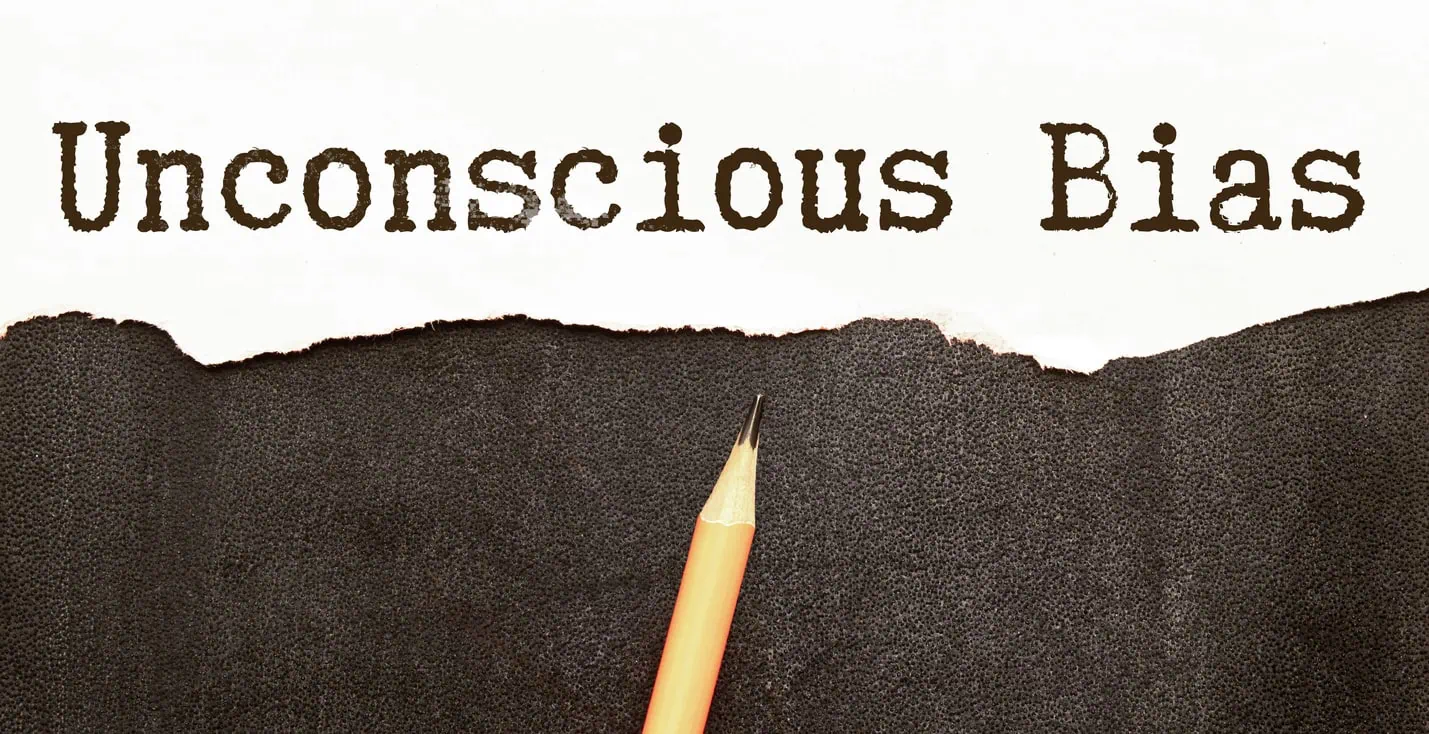Welcome to your essential guide on understanding and combating unconscious bias in the workplace. Whether exploring job search websites, stepping into your first job or seeking ways to boost inclusivity in your current role, knowing about unconscious bias is crucial. It shapes work environments, influences hiring decisions, and affects career progression.
This guide empowers you with knowledge, offers practical strategies for individuals and organizations, and showcases success stories from those leading the way in inclusivity. Unconscious bias might be a complex challenge, but addressing it opens the door to a diverse and dynamic workplace where everyone can thrive. Join us as we explore the invisible barriers that can hold us back and learn how to break them down together.
Understanding Unconscious Bias
Unconscious bias refers to the automatic, mental shortcuts used to process information quickly and make decisions. While these biases help us manage the world around us, they can also lead to unfair judgments and decisions, especially in the work atmosphere. At its core, understanding this bias is crucial for creating a more inclusive work environment.
Origins of Unconscious Bias
Unconscious biases are rooted in the human brain’s need to categorize information. They arise from cultural environments and personal experiences. Despite being involuntary, these biases influence behavior and decisions.
Examples of Unconscious Bias
- Affinity Bias: This occurs when individuals favor those like themselves in appearance, beliefs, or background.
- Confirmation Bias: People look for information that confirms their preconceptions, disregarding contradictory evidence.
- Gender Bias: A tendency to prefer one gender over another, often unconsciously, can affect hiring and promotion processes.
To combat these biases, educational programs like those offered by Harvard’s Project Implicit offer tools to identify and adjust our unconscious assumptions.
Understanding and managing unconscious bias is not just about fairness; it’s also about enhancing workplace productivity and innovation by ensuring diverse perspectives are acknowledged and valued.
Common Types of Unconscious Bias in the Workplace
In the workplace, unconscious bias can manifest in various forms, each influencing decisions and interactions. Awareness and proactive measures are essential to address these biases effectively. Let’s look deeper into the common forms of bias:
Age, Cultural, and Gender Bias
- Age bias occurs when assumptions are made about an individual’s capability based on their age. For example, older employees might be perceived as less adaptable to new technologies, while younger employees might be viewed as lacking experience. Age bias can hinder career advancement and limit opportunities for personal growth.
- Cultural Bias: Cultural bias involves prejudice against individuals from specific cultures or those who speak different languages. This can lead to exclusion, misunderstanding, and undervaluing employees’ contributions from diverse backgrounds. Cultural bias often manifests through stereotyping and assumptions about people’s abilities based on their ethnicity or cultural practices.
- Gender Bias: Gender bias occurs when individuals are treated differently based on gender. This can affect hiring, promotions, and everyday interactions in the workplace. Common examples include assuming that certain jobs are more suitable for men or women or offering different salaries for the same roles. Addressing gender bias involves creating gender-neutral recruitment standards and setting diversity goals.
Name and Beauty Bias
- Name Bias: Name bias is the tendency to prefer specific names over others, usually Anglo-sounding ones, during recruitment. This can result in equally qualified candidates with non-Anglo names being overlooked. Implementing blind hiring practices, where names and other personal information are removed from resumes, can help mitigate this bias.
- Beauty Bias: Beauty bias refers to the favorable treatment and positive stereotyping of individuals considered more attractive. This can affect hiring decisions and career advancement. To reduce beauty bias, companies can omit photos from resumes and conduct initial interviews via phone or video calls without video.
Halo and Horns Effects
- Halo Effect occurs when an overall positive impression of someone is based on one of their qualities or traits, which can lead to overlooking other essential characteristics. This bias can affect performance evaluations and promotions. Conducting multiple interviews with different interviewers can help counteract the halo effect.
- Horns Effect: The horns effect is the opposite of the halo effect, where a negative impression of someone is based on one negative trait or experience. This can unfairly impact performance reviews and career development. Encouraging a structured and balanced feedback process can help mitigate this bias.
Mitigating Unconscious Bias
Implementing structured decision-making processes can help mitigate the impact of these biases. For instance, standardized interview questions and masked review procedures can ensure fairness and objectivity in recruitment and promotions. Practicing transparency in how decisions are made can also help in maintaining accountability and reducing the effects of unconscious bias. This approach is vital in cultivating a broader diversity of organizational talent and ideas.
By systematically addressing these biases, companies can enhance workplace equity and increase the quality and creativity of their workforce. This ensures compliance with equal opportunity laws and enhances the company’s reputation and performance. For specific information on how to deal with bias in interviews, read How Diverse Candidates Can Overcome Interviewer Bias.
How Unconscious Bias Negatively Impacts Business Results
Unconscious bias affects individuals and a company’s overall health. It undermines teamwork, creativity, and the bottom line.
Effects on Team Dynamics
Unconscious bias can create divides within teams, reducing collaboration and trust. When team leaders unconsciously favor certain members, it can lead to resentment and a lack of cohesion among team members. This favoritism can result in unequal distribution of opportunities, where some team members may receive more challenging projects or better mentorship than others. Consequently, this can demotivate employees who feel overlooked, decreasing productivity and engagement. In the long term, a biased team environment can erode the overall team spirit and hinder effective communication and collaboration.
Impact on Hiring and Progression
Companies may miss out on top talent due to biased hiring practices. When unconscious biases influence hiring decisions, highly qualified candidates from diverse backgrounds may be overlooked. This can be especially detrimental in competitive industries where innovation and diverse perspectives are critical for success. Additionally, biases in promotion can prevent the most competent individuals from advancing, regardless of their abilities. This affects individual careers and limits the organization’s potential by not leveraging the full range of talent available. Ensuring unbiased hiring and promotion processes can enhance organizational performance and create a more inclusive workplace.
Influence on Employee Satisfaction and Retention
Bias can lead to employee dissatisfaction and high turnover rates. Employees who feel undervalued or discriminated against are likelier to leave the company, seeking a more inclusive and fair workplace. High turnover rates increase hiring and training costs and can disrupt team dynamics and productivity. Moreover, when employees perceive a lack of fairness, it can negatively impact their morale and engagement, further affecting their performance. Addressing unconscious bias is crucial for maintaining a positive company culture and retaining top talent.
Customer Relationships
Unconscious bias can also extend to client interactions. Clients who feel they are not receiving equal treatment might take their business elsewhere, impacting the company’s reputation and revenue. Furthermore, a lack of diversity within teams can limit understanding of diverse customer bases, reducing market reach and impact. Diverse teams are better equipped to empathize with and meet the needs of a broader range of clients, enhancing customer satisfaction and loyalty. By addressing unconscious bias, companies can build stronger, more inclusive customer relationships and improve their market position.
Unconscious bias can significantly impact a company’s ability to perform and grow efficiently. Therefore, addressing these biases is crucial for a healthy, productive workplace environment. Through awareness and intervention, companies can better harness the potential of all employees, fostering a more inclusive and prosperous business landscape.
Personal Actions to Reduce Unconscious Bias
Individuals have the power to combat unconscious bias by taking active steps in their daily interactions and decision-making processes.
Self-Awareness
- Pause and Reflect: Before making decisions, consider whether unconscious bias might be influencing your choices. This practice, known as “constructive uncertainty,” involves slowing down and questioning your immediate reactions. Reflecting on positive examples of individuals from stereotyped groups can help counteract biases.
- Diversify Your Network: Surround yourself with people from different backgrounds to broaden your perspectives. Building relationships with individuals from various cultures, ethnicities, and experiences can help you appreciate different viewpoints and reduce stereotypes. Engaging in diverse social circles enhances cultural competence and empathy.
- Challenge Stereotypes: Actively question and counteract stereotypes when you encounter them. This can involve speaking up against biased comments or behaviors, promoting inclusive language, and supporting initiatives that challenge societal norms. Encouraging discussions about diversity and inclusion in your workplace or community can help create an environment where stereotypes are addressed and mitigated.
Training and Workshops
- Understanding Unconscious Bias: Learning how biases form and how they can affect behavior is the first step in mitigating them. Training sessions often cover the science behind unconscious bias and its impact on decision-making processes.
- Practical Strategies: Techniques to identify and mitigate bias include using blind recruitment methods, diversifying interview panels, and implementing structured decision-making processes. These strategies help ensure that biases do not influence hiring, promotions, or other critical decisions.
- Role-Playing Scenarios: Practicing real-life situations to develop skills in addressing bias is a critical component of effective training programs. These exercises can help individuals recognize and respond to biased behaviors in a controlled environment, improving their ability to handle similar real-life situations.
By committing to these actions, individuals can make meaningful changes that impact their personal lives and contribute positively to their professional environments.
What Employers Can Do
Employers play a crucial role in mitigating unconscious bias within their organizations. Here are strategic actions they can take.
Implement Bias Training Programs
Regular training sessions educate employees about unconscious bias and its impacts. These programs should include practical exercises to identify and counteract biases. Effective training programs often incorporate real-world scenarios, role-playing, and interactive activities that allow employees to practice recognizing and addressing their biases. Such programs should be ongoing and updated regularly to reflect new research and societal changes. Additionally, incorporating feedback mechanisms can help improve the training and ensure it meets the needs of all employees.
Revise Hiring and Promotion Processes
Employers can use structured interviews and performance evaluations to reduce bias in recruitment and promotions. Tools like anonymized resumes, where personal information such as names and photos are removed, help ensure that candidates are evaluated solely on their qualifications and experience. Standardized assessment criteria, including specific job-related skills and competencies, provide a fair basis for comparison. Implementing diverse hiring panels can also help mitigate individual biases and promote a more inclusive evaluation process.
Encourage Diversity in Teams
A diverse workforce brings varying perspectives, reducing the likelihood of unconscious biases. Employers should strive for diversity in hiring at all company levels, not just entry-level positions. This involves setting clear diversity goals, actively seeking out diverse candidates, and creating an inclusive culture that supports and values diversity. Diverse teams are better equipped to innovate and solve complex problems by bringing various experiences and viewpoints.
Promote Open Dialogue
Creating forums where employees can discuss issues related to diversity and unconscious bias is essential. These discussions can foster understanding and prompt changes in behavior. Open dialogue initiatives might include regular team meetings, diversity councils, and safe spaces where employees can share their experiences and suggestions. Encouraging open communication helps build trust and allows for identifying and resolving bias-related issues. Leadership involvement in these discussions is crucial, demonstrating the organization’s commitment to addressing bias and promoting inclusivity.
Employers can visit the Equal Employment Opportunity Commission and The Ultimate Guide to Diversity Jobs for more insights on creating inclusive workplaces.
By adopting these approaches, employers can create a more inclusive environment that values all employees equally, improving overall organizational performance.
FAQs
Addressing frequently asked questions can help deepen understanding and action against unconscious bias in the workplace.
What is unconscious bias?
Unconscious bias is the automatic and often incorrect assumptions we make about others based on our backgrounds, cultural environment, and personal experiences.
How can unconscious bias be identified?
It can be identified through self-reflection, feedback from others, and by participating in training programs that help reveal personal biases.
Why is it essential to address unconscious bias at work?
Addressing it is crucial because it can affect hiring, promotions, and working relationships, ultimately impacting the workplace’s overall success and fairness.
What can individuals do to combat unconscious bias?
Individuals can continuously learn about diversity, seek out interactions with diverse groups, and consciously challenge their preconceptions and judgments.
How can organizations support a bias-free workplace?
Organizations can offer regular training, implement fair hiring and promotion practices, and create open channels for feedback and discussion on diversity issues.
For in-depth resources on managing workplace diversity, consider visiting SHRM’s guide on unconscious bias.
Conclusion
Unconscious bias affects every corner of the workplace, from individual interactions to company-wide policies. By acknowledging and actively addressing its presence, individuals and organizations can foster a more inclusive, productive, and innovative workplace. Progress demands continual learning, adapting, and supporting one another through initiatives that promote diversity and inclusion.
Now is the time to commit to change, educate oneself and others, and build workplaces that truly reflect the diversity of our communities. Join Diversity Employment today and be part of the movement towards a more inclusive and equitable workforce. Your actions can drive change and create a better future for all employees!




